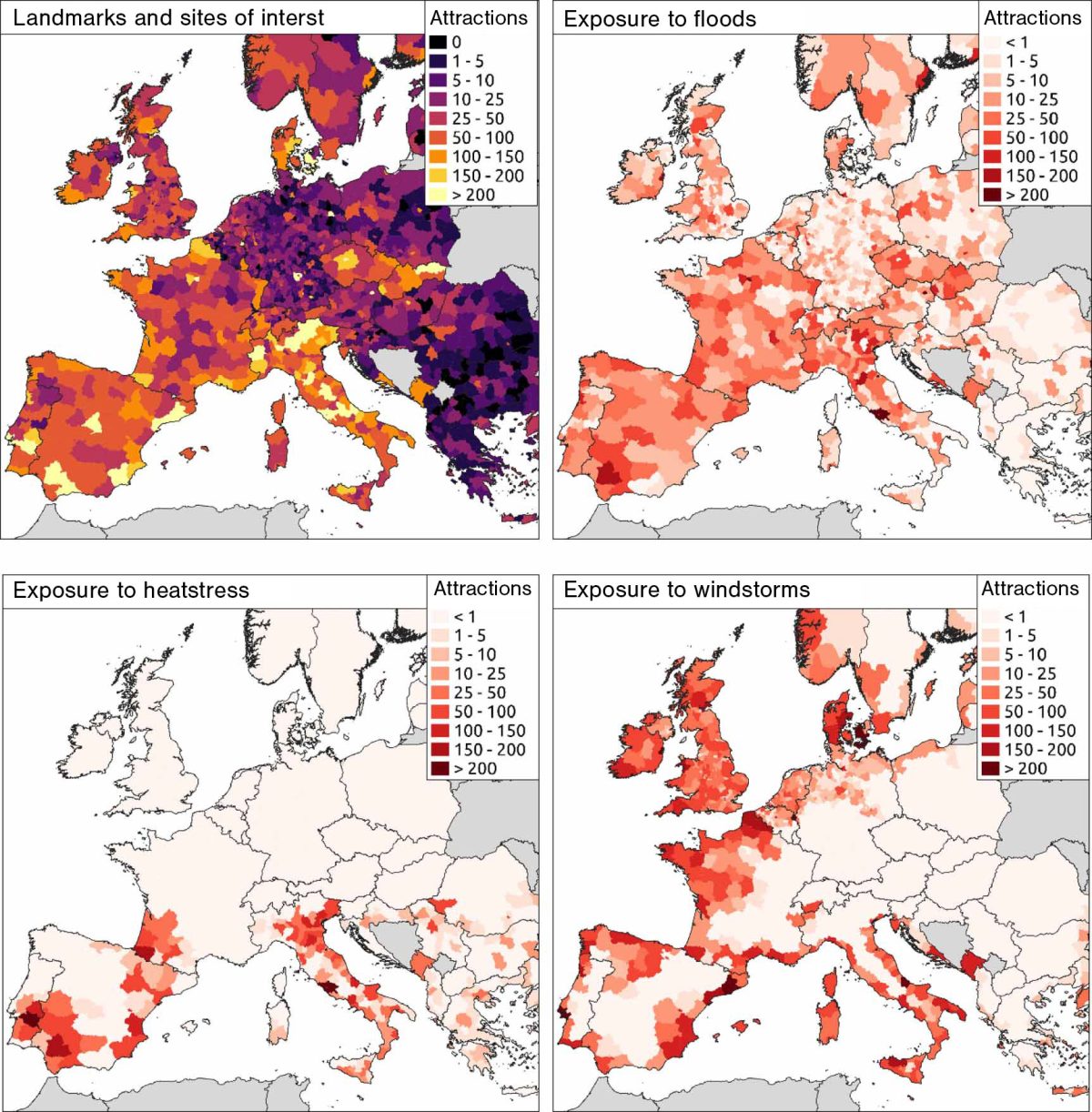In Graphic Detail: Europe’s Tourism Destinations Feel the Heat
2 min readArticle body copy
In July 2023, tourists scrambled for safety as wildfires raged across Greece. In some instances, rescuers plucked trapped visitors off beaches by boat. On the island of Rhodes alone, fire forced some 19,000 people to flee—the largest evacuation in the country ever.
The disaster struck locals equally as hard, though the fires dealt them a double blow: with fleeing tourists went part of the economy.
As the world’s fastest-warming continent, Europe is facing multiple climate threats, from devastating floods to extreme heatwaves and wildfires. The changing climate threatens to upend tourism across the continent, and along with it, many nation’s economies. For a country like Greece, where the tourism industry represents about one-fifth of the GDP, another year of wildfire could be ruinous.
To understand how vulnerable European travel destinations are to extreme weather, a team of researchers from Italy analyzed over 110,000 attractions across Europe. They created a map of tourism sites—restaurants, hotels, and museums, for instance—and combined the map with extreme weather risk data, including floods, windstorms, and heat stress.
The study finds that tourism hotspots in large cities and coastal areas—such as Rome, Italy; Sevilla, Spain; and Copenhagen, Denmark—are the most at risk. These places are densely packed with attractions and are often in geographically exposed locations easily hit by high temperatures, gnarly winds, or rising rivers.

A new study maps the exposure of Europe’s tourism destinations to weather extremes. The upper left shows the density of tourism attractions—such as hotels, museums, and restaurants—and the top right, bottom left, and bottom right show the density of attractions impacted by floods, heat stress, and windstorms, respectively. Graphic by Camatti et al.
More heatwaves will strike popular coastal destinations in Italy, Greece, Spain, Portugal, and southwest France, while extreme windstorms will wallop coastlines, particularly in the northwest of Europe and the United Kingdom. Flooding is expected to increase across the continent, too, with the worst projected for France, Italy, and the United Kingdom.
The extreme weather will result in long-term economic pain for locals, researchers say. Repair costs from weather-related damage, fewer tourists, and a tarnished image will stall what’s been an economic engine for many countries.
The researchers hope their maps and data sets will guide climate adaptation strategies to make the tourism industry more resilient and to assist with emergency planning. Whatever the strategies, they’re unlikely to be in place for what looks like another scorcher of a summer at popular European destinations.



